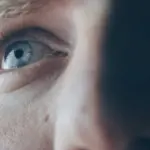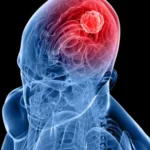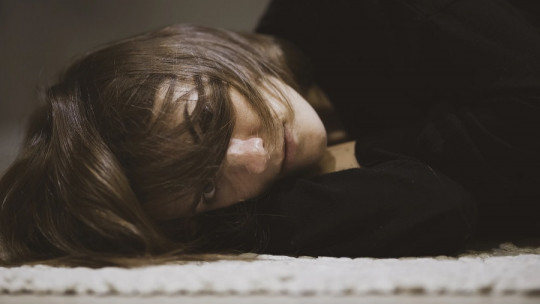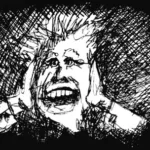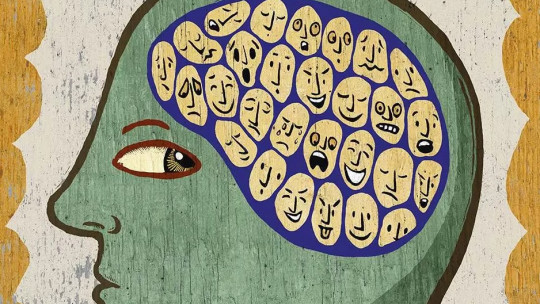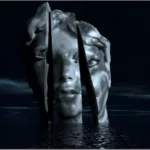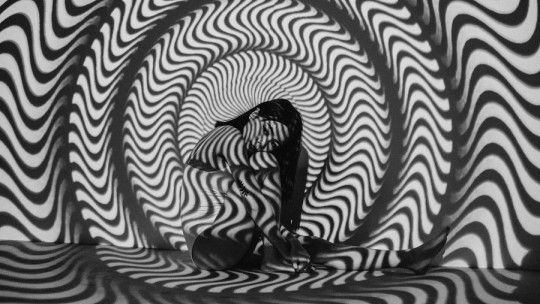
There are a series of mental disorders in which, more or less frequently, a series of symptoms that constitute some of the psychopathologies of imagination can arise comorbidly. For example, it occurs with schizophrenia and other psychotic disorders, mood disorders, and some sensory impairments.
The psychopathologies of the imagination are a series of “perceptual deceptions” in which a person perceives a series of images in their mind that are not actually physically present, so those perceptions are not real, but are a product of their imagination; although the person experiences the perception of those images as if they were real.
In the following lines we will see in greater detail What do the main psychopathologies of imagination consist of? and what are its characteristics.
What are psychopathologies of imagination?
Psychopathologies of the imagination, also known as “perceptual deceptions,” are a set of psychopathologies in which a person perceives a series of images that are products created in their mind, although they experience them as if they were real. Therefore, it is a perceptual interpretation, which has turned out to be misleading, of an image cognitively experienced in terms of sensory-perception.
The explanation of a phenomenon as particular as that of the psychopathologies of the imagination could be because perception and imagination present the same rules within their process through the functioning of the human mind. In these cases, furthermore, the sensory organs in charge of perception and imagination do not have any alteration that would justify this anomaly, so that this may be a key characteristic to differentiate psychopathologies of imagination from perceptual distortions.
However, it should be noted that on some occasions the psychopathologies of imagination could originate from some alteration or dysfunction in the sensory organs for various reasons (e.g., due to the voluntary or accidental ingestion of a toxic substance, due to some dysfunction brain, among others).

Types of imagination psychopathologies
In this section we will make a subdivision of the psychopathologies of the imagination between two large categories: the first would be that of pseudoperceptions or anomalous images; and the second, that of hallucinations.
1. Anomalous images or pseudoperceptions
This subcategory of imagination psychopathologies will include a group of anomalous mental images that can be confused with real perceptionssince its processing in the brain is quite similar to that of an authentic perception.
These images have one of the two characteristics mentioned below:
1.1. hallucinoid images
These types of images are produced in the mind of the subject in the absence of any concrete and real stimulus that can activate themso that they are autonomous and subjective, although they have characteristics similar to those of a real image of the outside that is perceived by the subject, making it difficult for them to differentiate them.
These images They normally occur in cases in which the person suffers from some type of condition in the central nervous system., generally being very simple images lacking any type of emotional meaning (e.g., lights, flashes, etc.) or they could also be produced in an auditory modality (e.g., simple noises, isolated sounds, etc. ). In these cases the person is aware that they are a product of their imagination.
1.2. Hynopompic and hypnagogic images
Both hypnopompic and hypnagogic images are one of the extraordinarily frequent psychopathologies of the imagination among the general non-clinical population, since it is estimated that approximately 70% of the population has experienced them, so they are not usually part of any mental disorder that requires any type of treatment.
These anomalies were called in the first texts on the subject as “physiological hallucinations”, because they occur around sleep, that is, between sleep and wakefulness or vice versa, being moments in which people find themselves in a state of semi-consciousness.
A hypnopompic image is made up of those images that the subject perceives in a brief period between a state of sleep and wakefulness., being a type of pseudoperception, since the images that the subject perceives are not really in front of him. It is common for people who experience hypnopompic images to think that they were a dream they experienced while sleeping.
On the other hand, A hypnagogic image is one of those images perceived when a person is asleep.in a brief period of transit, which passes from wakefulness to sleep.
1.3. Post-images or consecutive images
This type of psychopathology of the imagination is reflected in those images that are usually produced as a consequence of excessive sensory stimulation just before they are experienced by the subject.
Its big difference with eidetism is that the representation of these consecutive images or post-images could not be evoked after a while, while in eidetism it could. On the other hand, it is also common for these images to have opposite properties with respect to those of the original image.
1.4. Eidetic and mnesiac images
In this case we are talking about images of memories from our past that appear in our minds in a transformed way.which could have been produced based on personal desires, being of a subjective nature and, furthermore, the subject experiences it with very low clarity and vividness.
Eidetic images deal with a series of very particular amnesiac images and can be considered a type of sensory memory, consisting of identical, or almost identical, mental representations of some sensory impression that have remained as if they were fixed in the subject’s mind. Likewise, the subject can evoke them voluntarily or they could also break into his mind involuntarily.
1.5. parasitic images
Its main difference with memory images is that parasitic images are involuntary and autonomous.; while consecutive images or post-images can be differentiated because the parasites are subjective, with the person themselves being aware that they have been a product of their mind.
However, they are similar to the others in that there have also been as a result of some stimulus that the subject has perceived but that is no longer present in the image, this characteristic being in turn a distinction with respect to illusions.
- Related article: “Intrusive thoughts: why they appear and how to manage them”
2. Hallucinations
Now we go with the other large subgroup that we have classified within the psychopathologies of the imagination, hallucinations, the most characteristic disorders within this group of psychopathologies.
However, despite having an important diagnostic value, hallucinations do not always occur within a mental disorder, and can sometimes appear in mentally healthy people, but who are under peculiar stimulating conditions.
When a person experiences some type of hallucination, It gives reality and body to images that your memory is remembering without them being perceived. at that moment through the senses, so the hallucinations, in truth, are the fruit of his mind.
A hallucination is a type of cognitive or mental representation that has characteristics similar to those of a perceived or imagined image, occurring if there is a stimulus that has triggered it or that can cause its perception and, despite it, they have the same impact at a cognitive level than if they were perceived in a real way. On the other hand, a hallucination cannot be controlled voluntarily by the person experiencing itso it is considered to be intrusive in nature.
- You may be interested: “The 6 main types of hallucinogenic drugs”
Characteristics of hallucinations
To better understand what one of the most relevant psychopathologies of imagination consists of, such as hallucinations, we are going to briefly explain some of its most important characteristics.
The first is that hallucinations try to a group of images with a high degree of intensityso the person considers that they have acquired a perceptive character, believing that they are really perceiving them on the outside, although in reality they are being created only in their imagination.
A second very relevant characteristic of hallucinations is that they deal with a more sensory and non-perceptual phenomenon, as the subject who experiences them might believe.
The third characteristic that should be highlighted about hallucinations is that They have objective qualities, that is, they have a corporeality, and they also have a specialty., so they appear in the space in front of the subject. According to Jaspers, hallucinations, in this sense, would be new perceptions, which could not arise from real perceptions and which have been presented simultaneously with the real perceptions that are before the subject.
On the other hand, these characteristics have not been exempt from criticism by those who maintain that when a patient hallucinates he is able to distinguish without difficulty between his hallucinatory experiences and his imagination. Another criticism in this regard states that it is a way of conceptualizing hallucinations that is incomplete, imprecise, and can be contradictory.
There is a very relevant consideration regarding hallucinations on the part of Reed, among others. This researcher considers that the fundamental characteristic of hallucinations is that the individual who hallucinates maintains a conviction of the reality of the experienceso the subject thinks that these hallucinations are real perceptions.
- Related article: “What is schizophrenia? Symptoms and treatments”
The classification of hallucinations
There are three fundamental modalities to classify hallucinations, these being the following.
According to its complexityis the first of the ways of classifying hallucinations, and can be divided into elementary or complex hallucinations.
Another way of classifying hallucinations is according to its contentswhich can be in the following ways:
- Religious and/or cultural contents.
- Desires, fears, memories, experiences, etc.
- In relation to the content of some delusion or other psychopathology.
- In relation to very stressful or shocking special life situations.
The third classification of hallucinations would be according to their sensory modality.which can then be visual, auditory, tactile, gustatory, olfactory, kinesthetic, etc.
On the other hand, there are a series of variants at the phenomenological level of hallucinatory experiences that should be mentioned, these being the following: reflex hallucinations, functional hallucinations, negative hallucinations, autoscopies and extracampine hallucinations.

